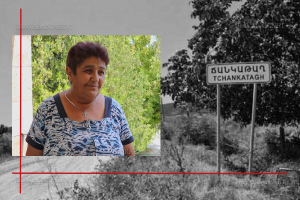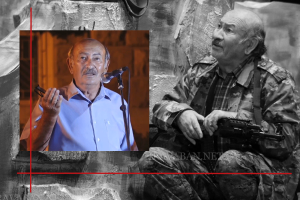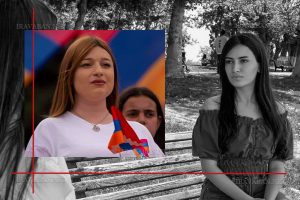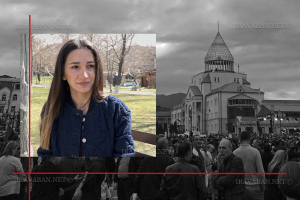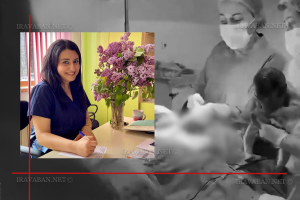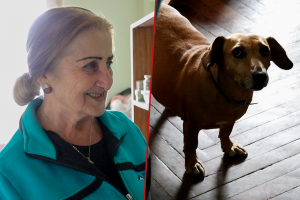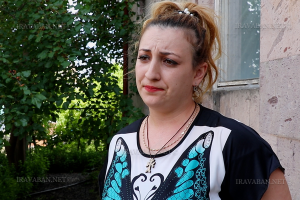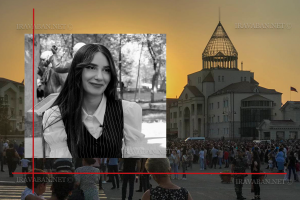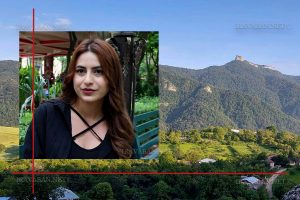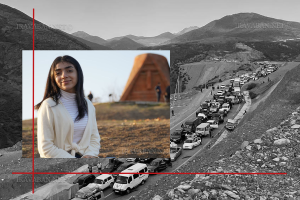Nora Mirzoyan, forcibly displaced from the occupied Republic of Artsakh, told in the framework of “Artsakh: Armenian Genocide 2023. Stories of Survivors” documentary project that she was displaced from the village of Khandzk of Askeran region.
She said that in 2020, when Azerbaijan launched a war against Artsakh, she was the last to leave the village, as she is a medical worker.
“I stayed in the village until 7 November. Then my son called and said: Mom, are you comming out today, if you do not, you won’t see me. I had to leave the village on 7 November, came to Goris, stayed for 5 days, and returned to Artsakh on 13 November,” our interlocutor noted.
She emphasizes that after 2020 they were not afraid of living in Artsakh. They lived their normal daily life.
“Each of us was doing our job, the soldiers were doing their duty, the workers were doing theirs. But after 19 September, 2023, it was already terrible. There was a funeral in the village that day. We arrived at one o’clock, when the funeral was about to begin, we heard heavy shots. Our village is on a hill, many areas, many positions were visible. The head of the community hurriedly jumped out of the hall into the yard, shouted: “Get out, it’s a war.” We all came out. It was a terrible situation; there were bombings, shootings, airplane noises from all sides. We all got mixed up because the children were at school, we had left the little ones at home, and we came to participate in the funeral. It was a terrible situation on that day. We waited for hours, it continued all day. The head of the community said, “Evryone go into the cellars until we see what’s going on.” It continued for one day,” Mrs. Nora recalls.
She states that when the shooting stopped, they came out of the basements to understand what was happening. Since there was no contact, they did not know any news.
“My son was a military, my two daughters were in Stepanakert. I got into such a terrible situation; I had no information from anyone. I could not hear from anyone for 2-3 days. The head of the community used to go down to the neighboring villages, when he returned we all gathered at the head of the village to see what news he had brought, what we could hear, but day by day we learned more terrible and worse news. We had casualties, the border villages were evacuated. There was horror in my heart. The next day we heard that the Turks entered the Askeran region,” she said.
According to our interlocutor, she stayed in the village until September 26. Her son came to take her out of the village.
“My son said, ‘There is no one in the village, get ready, we are going.’ Honestly, I didn’t believe it. I went up to the village to see what was happening. I came and saw that there is really no one in the village. I saw only the head of the community standing sadly in the middle of the village, looking at the community, walking around the yards. He said: you too go. We had a small car, but because of the blockade, our car was not working. We didn’t know how to get out of the village, only we were left: me, my son, my husband and the village head. They worked on the car for two or three hours, the head of the community with us, the car started working. We had a little fuel so came to Stepanakert,” she said.
Ms. Norn left Artsakh with her large family on 27 September. They traveled for 45 hours.
“Every day I tell my children: if a miracle happens, and Artsakh is taken, I will be the first to go to Artsakh, I cannot stay here,” she said.
Iravaban.net seeks help from citizens who will voluntarily agree to translate materials into different languages: Russian, English, French, Arabic, Persian, Turkish, Georgian, Chinese…
You can write to our e-mail address at: [email protected]
To donate for realization of the project: https://iravaban.net/en/become-a-supporter
Armenian Lawyers’ Association is the author of the idea “Artsakh: Armenian Genocide 2023. Stories of Survivors” documentary project of Iravaban.net and is the owner of copyright of the materials created within the framework of the project. In case of using the materials produced within the framework of the project, it is necessary to obtain the written permission of the Armenian Lawyers’ Association.
Details in the video.
Hasmik Sargsyan

